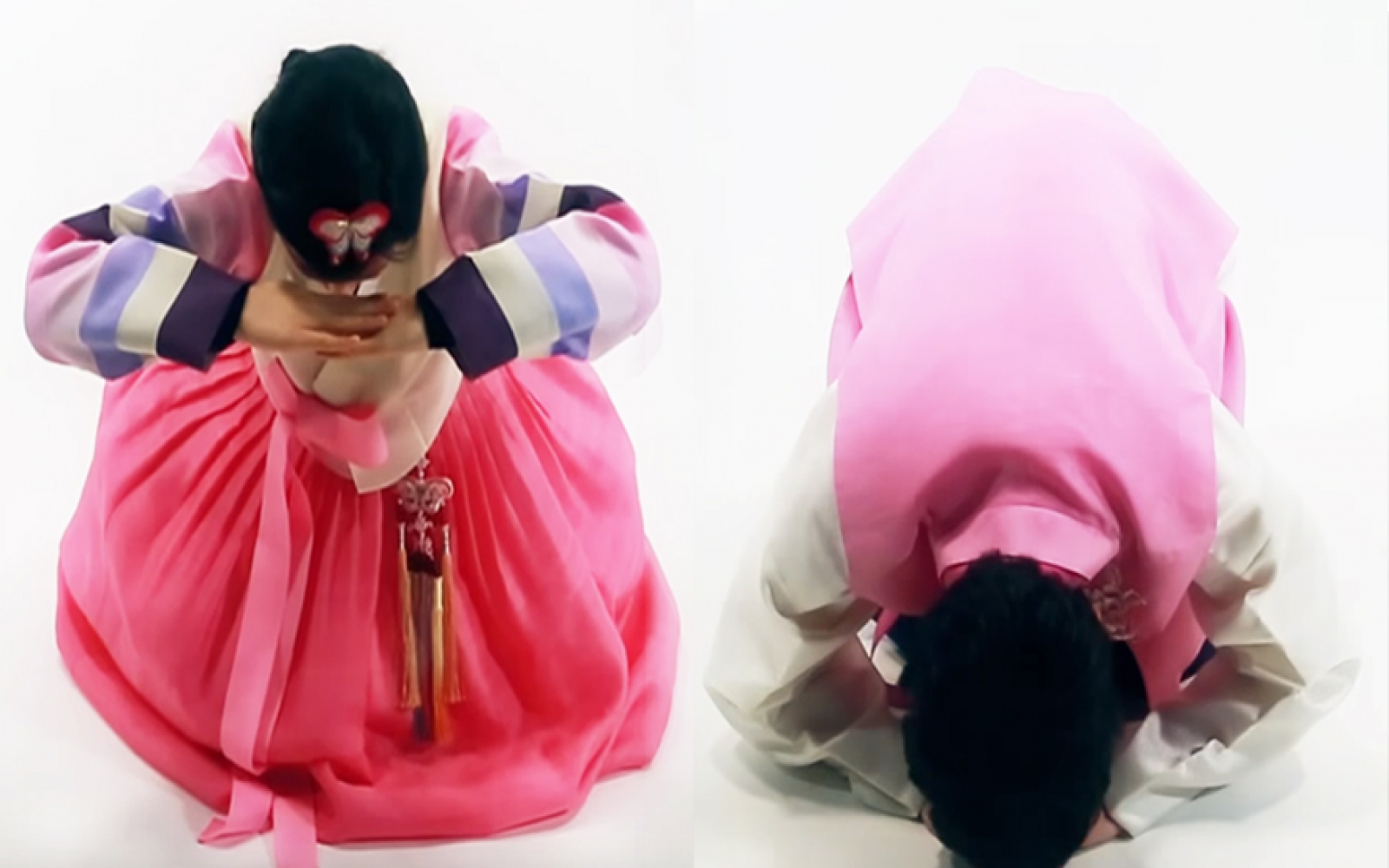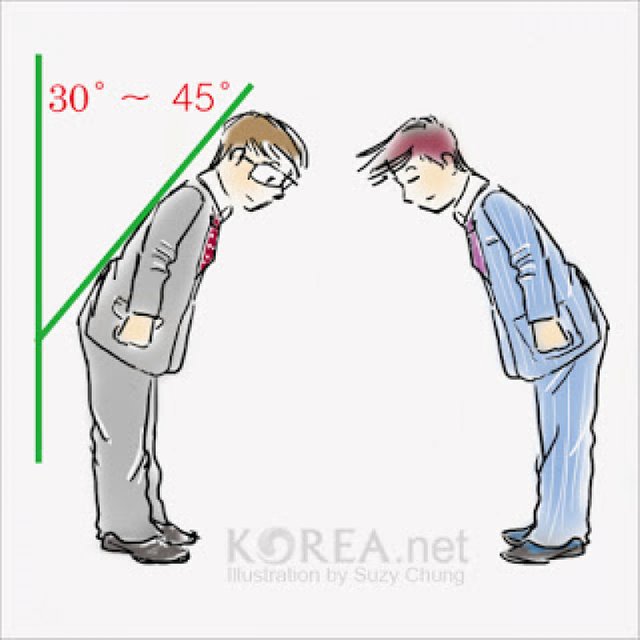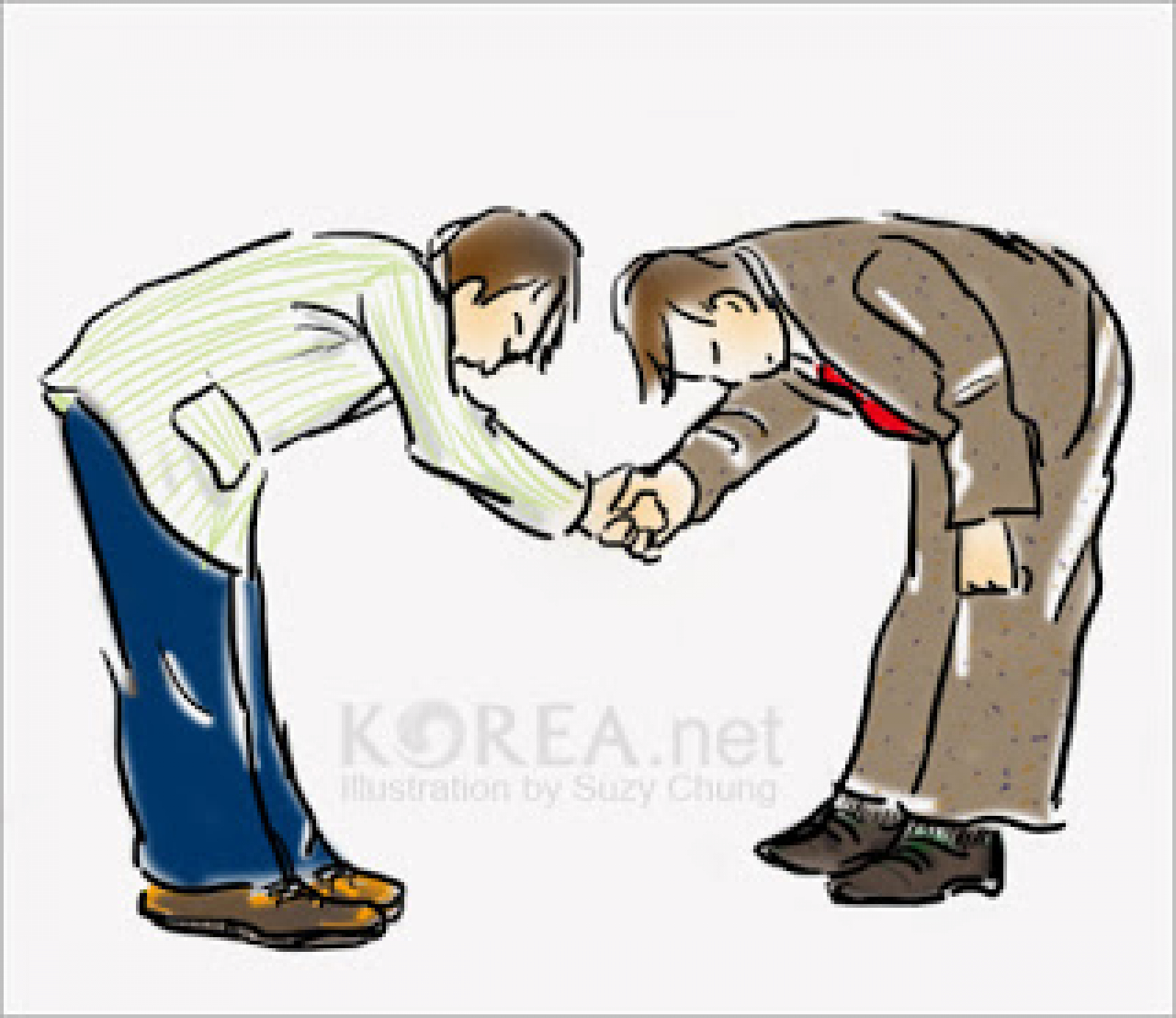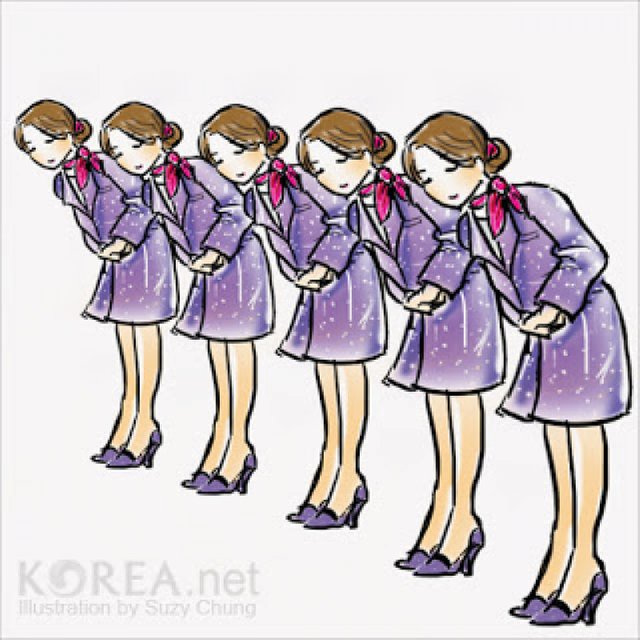
Image from ShareHows channel in Youtube
Korea is known as a country of abundant courtesy, something that is most evident in the long list of manners associated with greeting. Simply by watching how two or more Koreans greet one another, you can easily guess who is older and of higher social status.

Image from KOREA.net
The most common way of greeting in Korea is ‘bowing’, or ‘jeol’. A person who’s younger or lower in position bows to someone older or higher in position. When bowing, you place both your arms down along your body and avoid eye contact. Bowing silent bow can be seen as rude, so make sure to give a verbal greeting such as hello, nice to meet you, thank you, or good-bye.

Image from KOREA.net
When meeting somebody particularly high in position, such as the CEO of your company, or someone you highly respect, such as a parent, grandparent, or teacher, you may be expected to give a 90-degree bow, known as ‘keunjeol (big bow)’. Sometimes both parties are expected to do ‘keunjeol’ to each other, such as the bride and groom in a traditional Korean wedding. In other cases, such as a funeral, ‘keunjeol’ is expected regardless of the relative social positions of bower and recipient. When attending a funeral in Korea, you must give two consecutive ‘keunjeol’ to the portrait of the deceased, before turning to the grieving family members and giving one more. ‘Keunjeol’ are also given during ‘Jesa’, an ancestral rite ceremony for respecting ancestors held on the anniversary of their death. The method of ‘keunjeol’ can also vary between genders, as shown in the following video clip, with the difference coming in which hands overlaps which, based on the philosophy of Ying and Yang.

On other occasions, it may be considered polite to bow with your both hands overlapped on your navel. In Korea, this is called the ‘navel bow’ or ‘belly button bow’, and you will often see kindergarten teachers teaching it to their students in school. The navel bow can mostly be seen being given by employees working in service industries such as hotel or department store staff, or flight attendants, as they greet customers.
Similar to the West, Koreans also often shake hands, but this too involves its own specific Korean manners. When Koreans first meet and the person who’s younger or lower in position bows, the other side, who’s older or higher in position, offers to shake hands, or perhaps give a slight nod. When shaking hands, the person lower in status must show respect by bringing his or her left hand to the right side of their chest or placing it under the right elbow, while also giving a bow. Elders may touch the back of your hand with their left hand while shaking hands to show amicability. If two people are similar age or social status, they may still casually bow and shake hands, nut this is not mandatory.
Etiquette is similar when people are parting, with the expectation being to wait for the older or higher positioned person to take lead and leave first, shaking hands or waving to say goodbye. In this case, the other side can bow to answer and also say farewell. People of identical status can shake hands or wave hands to each other, but if someone with lower status does that, it would be considered ill mannered.
One more type of bow is that given to show respect to a monk, or spiritual guru, in which you hold your hands together in the pose of making a prayer while bowing.